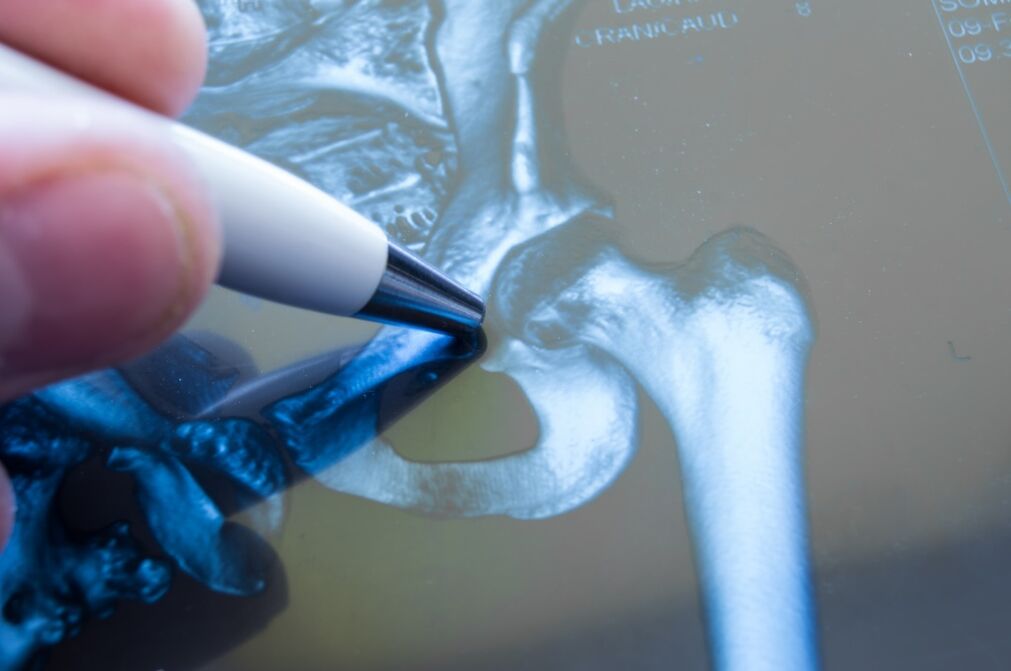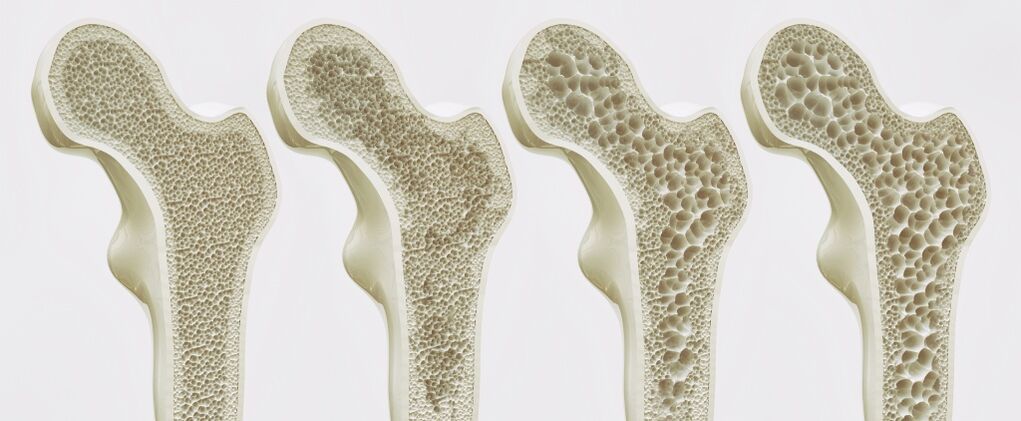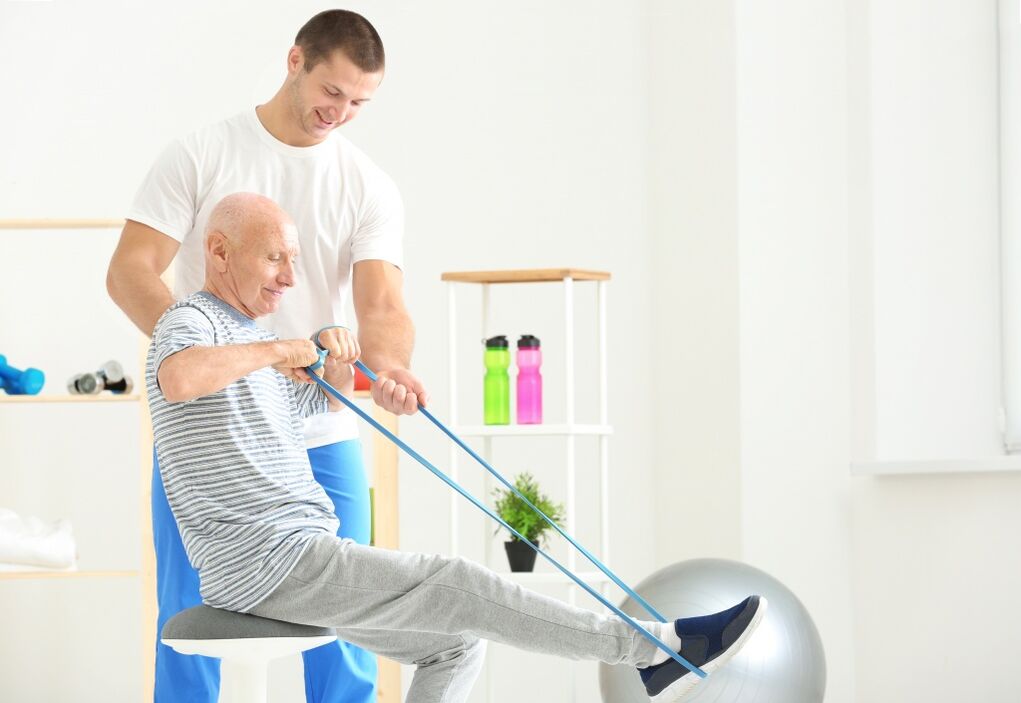
Arthrosis of the hip joint (coxarthrosis) is a degenerative disease of the cartilage of the hip joint that leads to persistent dysfunction of the joint and a handicap of the patient. Osteoarthritis of the hip joint is more common in older patients, and men are more likely to develop the disease than women.
Classification of osteoarthritis of the hip joints
There are two main types of the disease:
- primary - the onset of the disease against the background of complete well-being;
- secondary - develops against the background of inflammatory joint disease after a previous injury, as well as with congenital disorders of the development of the hip joint, its dysplasia.
Causes of Coxarthrosis
Based on the reasons for the development of osteoarthritis of the hip joint, the following types are distinguished:
- idiopathic - coxarthrosis, which develops for no specific reason;
- involutive - osteoarthritis related to age-related natural changes in the body, manifests itself in old age;
- dysplastic (congenital) - osteoarthritis that develops in the joint against the background of congenital abnormalities in its development;
- post-infectious - osteoarthritis that develops in the joints affected by rheumatoid arthritis, as well as due to some other infections;
- post-traumatic - osteoarthritis that develops as a result of traumatic joint damage;
- dyshormonella - coxarthrosis, which develops against the background of metabolic disorders due to diseases of the endocrine system or hormonal therapy;
- vascular - the disease develops as a result of circulatory disorders in the joint;
- hereditary - develop as a result of hereditary features of the development of cartilage tissue (often in combination with deforming osteoarthritis of other joints).
In addition, osteoarthritis of the hip joint can be a result of a violation of the biomechanics of body movement, which is often associated with curvature of the spine, intervertebral hernias, or defects in the skeleton of the lower extremities (e. g. you). Lameness or poor posture put excessive strain on the hip joint, which can trigger coxarthrosis. Another common cause of coxarthrosis is inactivity, but excessive physical activity (sport or work) can also cause joint disorders.
How does osteoarthritis of the hip joint manifest itself?

Patients with coxarthrosis initially complain of pain in the hip joint. It is accompanied by lameness, over time there is atrophy of the muscles of the thighs and glutes. Movement in the joint is accompanied by a characteristic crunch, over time the mobility of the joint decreases. The intensity of the symptoms depends directly on the degree of the disease.
Coxarthrosis 1 degree
The initial stage of the disease is manifested in slight pain, which can be disruptive in the morning or after significant physical exertion of the joint. A meteosensitivity of the affected joint can also be determined, which manifests itself in pain when the weather changes. The patient may notice a morning stiffness in the joint, which disappears after exercise after a little warm-up.
The radiological changes are minimal - there may be a slight narrowing of the joint space, a thinning of the cartilage covering the femoral head.
2nd degree coxarthrosis
The pain intensity increases slightly at this stage of the disease as the pain radiates to the groin and knee. There are frequent cases of misdiagnosis of coxarthrosis associated with pain radiating to the knee and the popliteal ligaments. The pain begins to bother not only after physical exertion, but also at rest. When moving the limbs, extraneous noises occur from the joint (clicks, crunching). The range of motion in the joint is clearly restricted, especially rotational (circular), the biomechanics of the joint movements are impaired and the functionality is restricted accordingly. Pain and limited mobility in the joint lead to mild lameness, which in turn leads to moderate atrophy of the gluteal muscles from the side of the affected joint.
The x-ray shows the narrowing of the joint space by a third of the normal width, clear thinning of the cartilage up to a partial absence, the appearance of osteophytes on the joint surfaces, deformation of the femoral head and its upward displacement.
Grade 3 coxarthrosis
At this stage of the disease, pain becomes constant, even at night, pain relievers are difficult to relieve. The range of motion in the joint is reduced to a minimum, the biomechanics of the joint is significantly impaired. The smallest movements are accompanied by crepitation, lameness becomes pronounced, there is a significant distortion of the pelvis and shortening of the limb from the side of the affected joint. The buttocks and thigh muscles on the affected side are atrophied. Due to the considerable lameness, patients often cannot move independently without a walking stick or support.
The X-ray examination shows a pronounced deformation of the femoral head, a thickening of the femoral neck. The joint surfaces are covered with bony growths, the joint space is so narrow that it is practically absent.
Diagnosis of osteoarthritis of the hip joint
Diagnostic measures begin with interviewing the patient and examining him, a series of laboratory tests, after which special instrumental techniques are used to confirm the diagnosis. The following methods are considered to be the most informative today:
- X-ray examination -allows you to see the contours of the articular surfaces, the presence or absence of bone growth on them, determine the presence of deformities of the femoral head and the width of the joint space;
- Joint ultrasoundallows not only the study of the articular surfaces, but also the identification of dystrophic changes in the articular ligaments;
- Computed tomography (CT)- makes it possible to obtain X-ray images in layers, but they are clearer and more voluminous;
- Magnetic resonance imaging (MRI) -allows you to examine the condition of joint structures, articular surfaces, bones and ligaments with a high degree of visualization. It is currently considered to be the most advanced diagnostic method.
Coxarthrosis treatment
The most effective is the complex treatment of osteoarthritis of the hip joint, taking into account the stage of the disease. It should be remembered: the earlier treatment is started, the more likely it is to avoid the progression of the disease, immobilization of the patient and the loss of his or her ability to work. Therefore, even with the slightest discomfort of the joint, seemingly insignificant pain, stiffness and meteosensitivity of the joint, you need to see an orthopedic surgeon who will conduct an examination, clarify the diagnosis and prescribe treatment. Cartilage tissue is not restored, so it is better not to wait for the moment when its damage is significant, but to start treatment at the stage of malnutrition of the cartilage, until irreversible changes in it have developed.

The scope of treatment dependson the stage of the disease. So, with coxarthrosis of the first degree, non-narcotic analgesics and NSAIDs are used - they allow you to get rid of the pain syndrome, as well as eliminate inflammation in the joint tissue and prevent further tissue damage. Due to the fact that the pain syndrome and inflammation are not intense at this stage, there is no need for long-term use of such drugs. As a rule, it is enough to do with local means - ointments, gels with NSAIDs. It is much more important in this phase to ensure the normalization of the metabolic processes in the cartilage tissue in order to minimize its degeneration, for which drugs from the group of chondroprotectors are used. Their task is to restore the metabolism in the cells of the cartilage tissue, as a result of which the trophism of the joint improves and the intensity of inflammation decreases. In the treatment of coxarthrosis, for example, a chondroprotective drug has proven its worth, the active ingredient of which is a source of natural components of healthy cartilage tissue. It stimulates the production of the most important structural components in cartilage - proteoglycans and prevents the destruction processes of the cartilage tissue.
A full treatment of coxarthrosis of the second and third degree is already much more difficult: the cartilage is already clearly damaged, the joint surfaces are exposed, on them osteophytes form in large numbers, which impede the normal movement of the joint. At this stage, only symptomatic treatment is possible, which will make it possible to relieve pain in the joint and slow down the processes of cartilage destruction. The pain at this stage of the disease is intense, analgesics and NSAIDs are used to relieve it, and the best solution would be a combination of the use of local agents (ointments, creams) and dosage forms with a systemic effect (tablets, injections). .
With exacerbations of the disease, regardless of its stage, the load on the joint should be minimized to avoid further cartilage damage. During remission, in addition to taking chondroprotectors to normalize metabolic processes in cartilage tissue, exercise therapy, massage and exercise therapy are recommended. They adequately load the joint, prevent its immobilization and the deposition of mineral salts in the joint tissues and ligaments, and stimulate microcirculation. Exercise therapy is also of great importance for the general condition of the body: During exercise, biologically active substances are produced that increase mood and general well-being - endorphins and serotonin.
Proper nutrition plays an important role in the complex treatment of osteoarthritis of the hip joint. The patient's diet should be complete, rich in animal and vegetable proteins, fiber and vitamins. Proper nutrition is important not only to stimulate regeneration of the joints, but also to keep the patient's body weight within normal limits. Obesity is an additional burden on the diseased joint and a factor in the progression of the disease.
At the stage of remission, methods of physiotherapy have proven themselves - electrophoresis, mud therapy, ultrasound and magnetic therapy. In addition, the effectiveness of biological and mechanical methods of treating coxarthrosis is determined. Among the biological methods, the most popular is hirudotherapy (leech therapy), which causes blood thinning and stimulation of capillary microcirculation both in the joint and in the surrounding muscles, thereby preventing atrophic processes in them. Mechanical methods include joint pulling to relieve the affected joint and acupuncture. However, it should be remembered: Physiotherapeutic, mechanical and biological methods of treatment of coxarthrosis can only be used during the period of remission. With an exacerbation of the disease, its use is fraught with the progression of inflammation and the destruction of cartilage tissue.
In the event that conservative methods of treating coxarthrosis have not worked, the patient can be offered surgical treatment - arthroplasty and joint replacement. The first variant of the operation involves the restoration of mobility in the joint due to the plastics of the own tissue, the second - the replacement of the joint surfaces with an endoprosthesis - a mechanical joint. Surgical intervention allows you to restore the mobility of the joint and restore the patient's ability to work.
Prevention of osteoarthritis of the hip joint
Preventive measures are limited to the use of chondroprotectors, proper nutrition and adequate stress on the joints, especially for those who play sports or do heavy physical work.
Coxarthrosis is a serious disease that can deprive the patient of the ability to move independently. Disability can be avoided by immediately seeking medical help at the first discomfort in the joint and competently treating the pathology from the first stage.





































